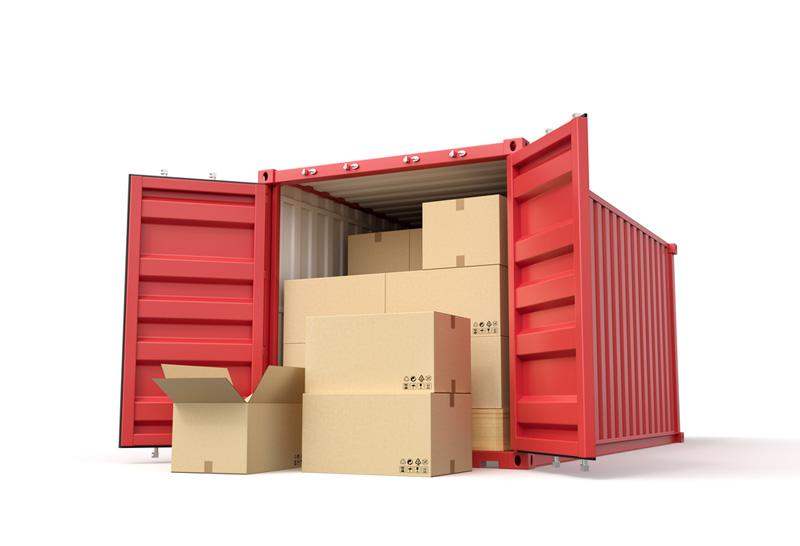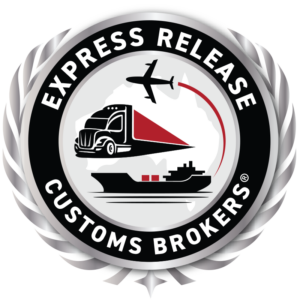Sea Freight Customs Clearance –
Full Container Load (FCL)
Full Container Load [FCL] means that all of the goods inside the shipping container are yours and that you will be responsible for all costs of collecting the container from the wharf, taking it to a quarantine depot for inspection (if necessary), delivering the container to your premise and then returning the empty container to the wharf.
All of these arrangements can be organised and facilitated through your customs broker. Some shipments may require special clearance, such as those containing hazardous materials or restricted items. In these cases, it is advisable to seek the professional help of Platinum® to ensure that all regulations are followed and that clearance is obtained in a timely manner.
Full Container Load (FCL) shipping is a complex process, but with the right planning and preparation, it can be completed without incident.
TALK TO A SEA FREIGHT FCL CUSTOMS BROKER EXPERT TODAY
Why rely on Full Container Load (FCL) Shipping?
Full Container Load (FCL) shipping is a cost-effective way to move large shipments by sea. When you ship FCL, your goods are packed into a container and shipped as a unit. This is in contrast to Less-than-Container Load (LCL) shipping, where your goods are consolidated with the shipment of other customers and shipped in a shared container. FCL offers several benefits over LCL, including lower costs, more control over your shipment and faster receiving times.
Because you are shipping a Full Container Load, you have sole use of the container. This means that your goods will not be subject to damage from other shipments being loaded or unloaded within a shared container. In addition, you can pack your FCL shipment according to your own requirements, rather than having minimal control of how your shipment is packed with the LCL scenario. As a result, FCL offers you more control over your shipment.
FCL is also generally more cost-effective than LCL. Because you are utilising the entire container, you have the whole space of the container to yourself. In contrast, with LCL shipping, you must share the cost of the container with other shippers. In addition, FCL transit times are generally faster than LCL because your shipment does not need to be consolidated with or de-consolidated from other shipments. As a result, FCL can offer you a faster and more cost-effective shipping solution for your larger shipments.


How does Full Container Load shipping work?
1. Purchasing your goods
Once you have agreed to buy the goods from your overseas supplier, this is the best time to have us involved so that we can liase with you and your supplier to let them know all of the paperwork requirements.
2. Booking your FCL shipment
Either your supplier overseas can ship your goods to Australia or we may be able to ship the goods for you [depending upon the country of export].
We would liase with your supplier to make sure that the cargo is arriving at the correct port and that all of the paperwork is correct. We also wish to make sure that your cargo is insured so that if the container falls off the boat, that you have insurance in place.
3. Preparing your goods for shipping
Depending on your requirements, you may wish to have all of your goods palletised inside the container [so that the goods can be forklifted out with ease] or you may wish to have your goods stacked from the floor to the roof of the shipping container without pallets.
If you are shipping fragile items like glassware, you may not wish to stack too many levels of cartons on top of each other, as this could create pressure on the cartons below.
In any case, it is important to start early and to allow yourself enough time to consider all of the packaging and unloading requirements especially for when the FCL is delivered to your commercial address for unpacking.
4. Moving the FCL from your suppliers premise to the port
When your goods have been packed into the FCL and are ready to be exported, either your supplier or us will move the FCL to the export sea port for shipping to Australia; this movement may occur either by road or rail.
5. FCL in Transit
Once the FCL is onboard the vessel for Australia, the vessel will make stops along the way to Australia to either collect or discharge containers. FCL containers from Europe will change vessels along the way to Australia [this is referred to as transhipment]. As the container is in transit to Australia, Platinum® will be pre-clearing your FCL through both the ABF and the DAFF.
6. FCL arrives into Australia
The shipping container will arrive at the nearest seaport to where the goods need to be delivered; the container will be unloaded from the vessel and then we will collect the container from the wharf and then deliver to your commercial premise.
We can deliver the container to your address and wait up to say an hour for you to unload the container or we can deliver the container to the ground and return in a few working days to collect the empty container.
It is important to note that the empty FCL container needs to be returned to the wharf promptly as the shipping company will charge you “rent” on the container [generally after 7 days of arrival into Australia]. Rent can vary from shipping company to shipping company but it would be at least $85 – $150 per calendar day for the first few days before it dramatically escalates [plus GST].
What we need from you to undertake Platinum® Customs Clearance
In order for us to customs clear your sea freight FCL (full container load) shipment, we require the following paperwork from you:

A commercial invoice for the goods

Bill of Lading
Should be available from your supplier. We require the First Original to be endorsed with your printed name, signature, date and company stamp on the reverse side and then to be posted to our office.

Packing List

Packing Declaration

Photos of the Goods

Fumigation Certificate
TALK TO A SEA FREIGHT FCL CUSTOMS BROKER EXPERT TODAY

Why Choose Platinum® for Full Container Load (FCL) Shipping?
If you’re looking for a company to ship your Full Container Load (FCL), Platinum® should be your first choice.
We are one of the leading customs brokers in Australia, with a team of highly experienced professionals who can handle even the most complex shipments.
Our team are highly efficient, so you can rest assured that your shipment will clear through the ABF and the DAFF quickly and without any delays. In addition, we provide comprehensive tracking and reporting, so that you will always have transparency as to where your shipment is and when it is expected to arrive.
Contact us today to learn more about our services and how we can assist you in having your shipment processed through the border quickly and smoothly.
Contact Platinum® Today!
Platinum® has been providing FCL sea freight customs clearance for importing businesses for two decades. We have the experience and knowledge to have your goods processed through the Australian Border Force [ABF] and the Department of Agriculture, Fisheries and Forestry [DAFF] quickly and efficiently.
Contact us today to learn more about our services or request a free quote online now. We look forward to helping you move your business goods forward!
Platinum® handles sea freight FCL clearances for clients in Melbourne, Sydney, Adelaide, Brisbane, Darwin, Fremantle and Hobart.
Frequently Asked Questions
How large is a Full Container Load?
A full container load is a shipment that will fill an entire shipping container. The cubic metre space available to you will vary depending on the type of container; such as 20”, 40” or 40HC”. FCL shipments are usually less expensive than LCL shipments because the freight forwarder does not need to consolidate or de-consolidate the shipping container.
FCL shipments also tend to be faster because they are not subject to delays caused by the consolidation or de-consolidation process. As a result, FCL is often the preferred shipping option for companies that are shipping large quantities of goods.
What is the difference between a Less than a Container Load and a Full Container Load?
LCL and FCL are two methods of sea freight shipping. LCL, or Less than Container Load is when multiple shippers’ have their shipments consolidated in the same shipping container.
FCL, or Full Container Load, is when one shipper has an entire container to themselves. LCL is cheaper per cubic meter but takes longer to load and unload because each shipper’s goods must be individually consolidated and de-consolidated.
FCL is more expensive to ship because you have more space at your disposal; FCL shipping is at least one week faster than LCL shipping because the container can be unpacked at your address.
Ultimately, the choice between LCL and FCL shipping depends upon, the kilograms and the cubic metres.
How do you calculate full container load?
FCL is typically measured in TEU, or “twenty-foot equivalent units.”
A 20” General Purpose container can accommodate approximately 33 cubic metres. A 40” General Purpose container can accommodate approximately 66 cubic metres. A 40” High Cube container can accommodate approximately 76 cubic metres.
Get a Sea Freight FCL Customs Clearance Quote
Complete the form below and we will send you a quote. It’s that simple!
Data submitted by this form will be used by Platinum® for the purposes of your enquiry and by no-one else. You can review our privacy policy here.
